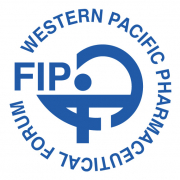Stop lead poisoning in children
Reference :http://www.who.int/mediacentre/news/notes/2013/lead-20131018/en/index.html
Oct , 18 2013
On the occasion of International Lead Poisoning Prevention Week, WHO urges countries to address lead paint as a first step.
| Geneva – Lead poisoning has devastating health consequences, in particular for children, with childhood lead exposure estimated to contribute to 600 000 new cases of children with intellectual disabilities every year. Overall, 99% of children affected by high exposure to lead live in low- and middle-income countries, says WHO on the occasion of International Lead Poisoning Prevention Week of Action, and calls on countries to strengthen national actions to eliminate lead paint.
Lead a major source of poisoning
Lead paint is a major source of potential lead poisoning for young children. It may be found in the home, on toys, furniture and on other objects. Decaying lead paint on walls, furniture and other interior surfaces creates lead-contaminated dust in the home that young children easily ingest. Mouthing lead-painted toys and other objects also exposes young children to lead. The sweet taste of lead paint means that some children even pick off and swallow small chips of paint.
“Lead poisoning remains one of the most important environmental health concerns for children globally, and lead paint is a major flashpoint for children’s potential lead poisoning,” says Dr Maria Neira, WHO Director for Public Health and Environment. “The good news is that exposure to lead paint can be entirely stopped through a range of measures to restrict the production and use of lead paint.”
It is estimated that 143 000 deaths per year result from lead poisoning and lead paint is a major contributor to this. Its use creates a health problem for many years into the future. Even in countries that have banned leaded paint decades previously, such paint continues to be a source of exposure until it is finally stripped and replaced. The cost of replacing lead paint means that people living in older, poorly-maintained housing are particularly at risk, and this disproportionately affects economically-deprived communities.
Phasing out lead in paint
WHO has identified lead as one of ten chemicals of major public health concern, and lead requires action by Member States in order to protect the health of workers, children and women of reproductive age. Such actions include adopting regulations and procedures to eliminate the use of lead decorative paints and provide information to the public on renovation of homes where lead paint may have already been applied.
“Paints with extremely high levels of lead are still available in most of the developing countries where paint testing has been conducted as part of the efforts of the Global Alliance to Eliminate Lead Paint. In most of the countries with lead paint, equivalent paint with no added lead is also available, suggesting that alternatives to lead are readily available to manufacturers,” says David Piper, Deputy Director, UNEP DTIE Chemicals Branch. The International Lead Poisoning Prevention Week of Action, provides an excellent opportunity to raise awareness of the widespread availability of lead paint.
Worldwide, 30 countries have already phased out the use of lead paint. The Global Alliance to Eliminate Lead Paint, co-led by WHO and UNEP, has set a target of 70 countries by 2015.
At high levels of exposure, lead damages the brain and central nervous system to cause coma, convulsions and even death. Children who survive such poisoning are often left with intellectual impairment and behavioural disorders.
At lower levels of exposure, which cause no obvious symptoms and that previously were considered safe, lead is now known to produce a spectrum of injury across multiple body systems. In particular, lead affects brain development in children, resulting in reduced IQ, behavioural changes such as shortening of attention span and increased antisocial behaviour, and reduced educational attainment. These effects are believed to be irreversible. Adults are at increased risk of kidney disease and raised blood pressure.
International Lead Poisoning Awareness Prevention Week of Action
The International Lead Poisoning Awareness Prevention Week of Action runs from 20-26 October 2013. This year’s theme – Lead-Free Kids for a Healthy Future – underscores the importance of avoiding the use of lead paint and using safe alternatives in order to prevent children coming to harm from lead poisoning.
